- Growing Peaches in Your Garden
- Choosing the Right Variety
- Planting and Preparation
- Watering and Fertilizing
- Pruning and Training
- Harvesting and Storage
- Pests and Diseases
- Tips and Techniques for a Successful Peach Harvest
- 1. Selecting the Right Variety
- 2. Proper Planting
- 3. Pruning
- 4. Watering and Fertilizing
- 5. Pest and Disease Control
- 6. Harvesting
- Peach Species and Varieties
- 1. Prunus persica
- 2. Prunus davidiana
- 3. Prunus kansuensis
- 4. Prunus ferganensis
- Exploring Different Types of Peaches
- 1. Freestone Peaches
- 2. Clingstone Peaches
- 3. Semi-Freestone Peaches
- 4. White Peaches
- 5. Yellow Peaches
- Selecting and Planting Peach Trees
- Choosing the Right Peach Variety for Your Garden
- Factors to Consider
- Popular Peach Varieties for Home Gardens
- Conclusion
- Caring for Your Peach Trees
- Pruning, Fertilizing, and Disease Prevention
- Pruning
- Fertilizing
- Disease Prevention
- Harvesting and Storing Peaches
- Harvesting Peaches
- Storing Peaches
- Tips for Enjoying Fresh Peaches
- When and How to Pick Ripe Peaches
- Color
- Texture
- Fragrance
- Taste
- Question-answer:
- How to grow a peach tree in the garden?
- What are the different species of peaches?
- What are some popular varieties of peaches?
- How long does it take a peach tree to bear fruit?
- Can I grow peaches in a container?
- Video: How to Plant Fruit Trees: The Complete Guide
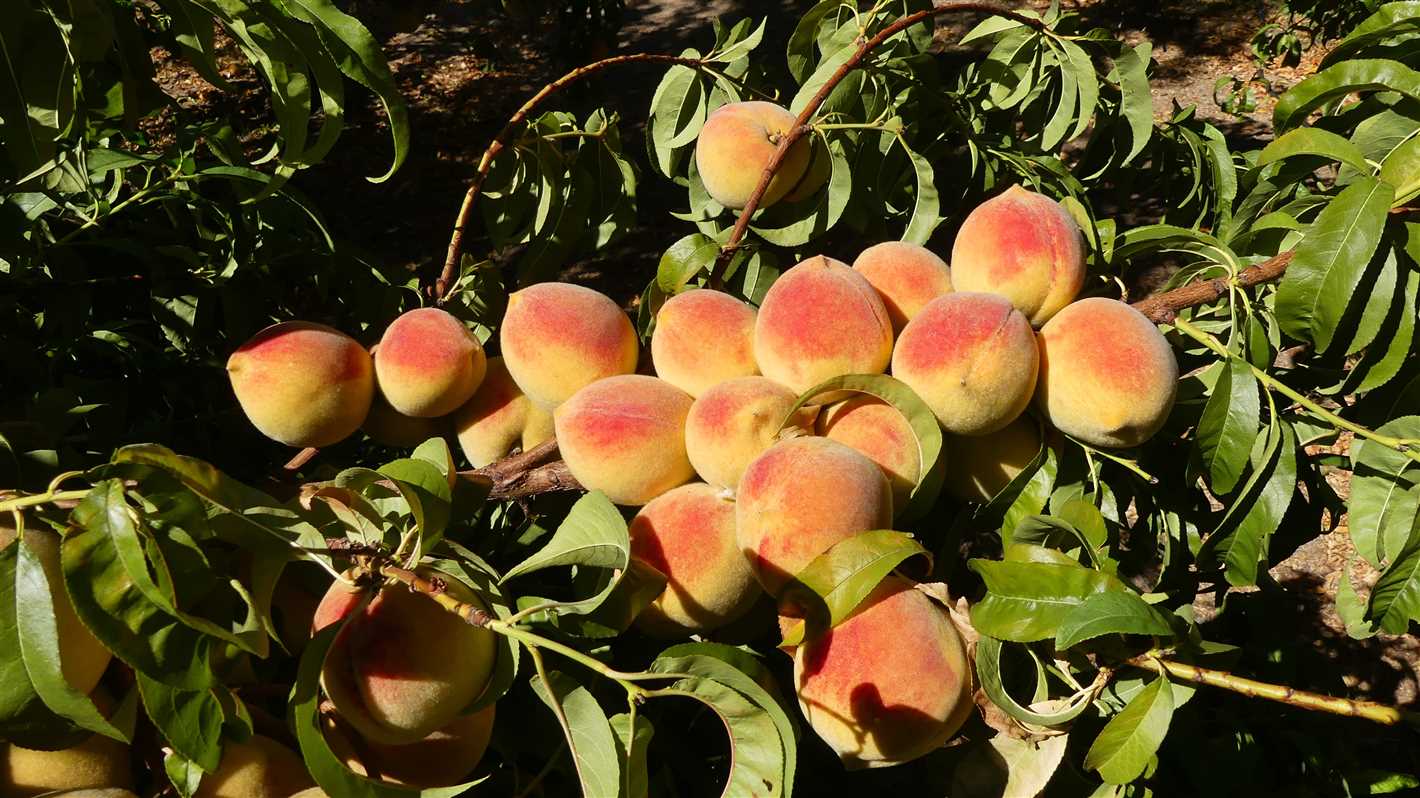
Welcome to your complete guide to growing peaches in your garden! Peaches are a delicious and nutritious fruit that can be enjoyed fresh, cooked, or preserved. With their fragrant blossoms and beautiful, juicy fruit, peach trees add beauty and flair to any garden. Whether you’re an experienced gardener or just starting out, this guide will provide you with all the information you need to successfully grow and care for peach trees.
Growing Conditions: Peaches thrive in climates with cold winters and hot summers. They require full sun, well-drained soil, and a pH level between 6.0 and 7.0. When choosing a location for your peach tree, make sure it has good air circulation and is protected from strong winds. Planting peaches near a wall or fence can help provide the necessary shelter.
Choosing the Right Variety: There are many different peach varieties to choose from, each with its own unique flavor, texture, and ripening time. Some popular varieties include Elberta, Red Haven, and Georgia Belle. When selecting a peach variety, consider your local climate and the chilling hours required for that particular variety to produce fruit. It’s also important to choose disease-resistant varieties to minimize the risk of pests and diseases.
Caring for your Peach Tree: Once you’ve planted your peach tree, it’s important to provide proper care to ensure its health and productivity. Regular watering is crucial, especially during dry periods. Pruning should be done in late winter or early spring to remove dead or diseased branches and promote proper airflow and sunlight penetration. Fertilizing with a balanced fertilizer in spring and summer will help provide essential nutrients for growth and fruit production.
Remember, growing peaches requires patience and dedication, but the reward of harvesting your own fresh, juicy peaches is well worth the effort. With the right growing conditions, the right variety, and proper care, you can enjoy the taste of summer right from your own garden. So get started on your peach-growing journey today!
Growing Peaches in Your Garden
Choosing the Right Variety
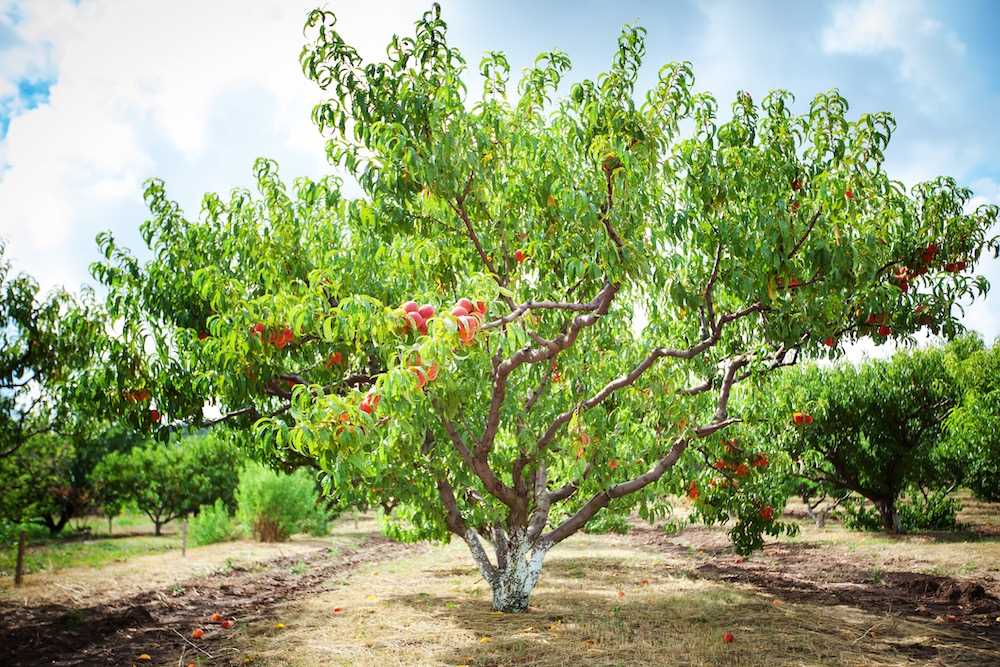

When growing peaches in your garden, it is important to choose the right variety for your climate and growing conditions. Some popular varieties include:
- Elberta: A widely grown variety known for its juicy and flavorful fruits.
- Redhaven: An early-season variety that is resistant to diseases.
- Glohaven: A mid-season variety with large, firm fruits.
- La Feliciana: A late-season variety that is suitable for warm climates.
Planting and Preparation
Peaches require full sun and well-drained soil. Before planting, prepare the soil by removing any weeds and incorporating organic matter. Dig a hole that is wide and deep enough to accommodate the root ball of the plant. Gently place the plant in the hole and backfill with soil, firming it gently around the roots.
Watering and Fertilizing
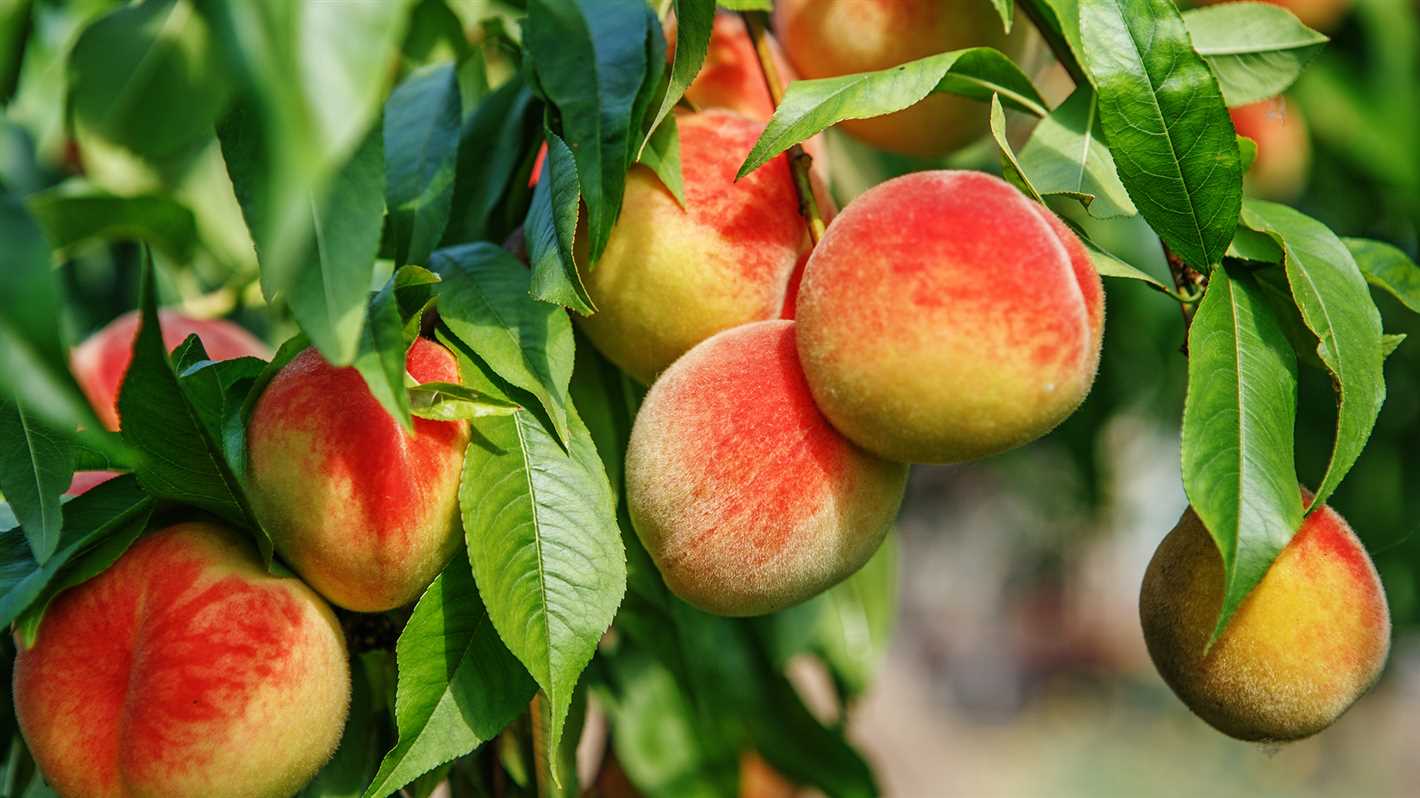

Water your peach tree deeply, especially during dry spells or when the fruits are developing. Avoid overwatering as it can lead to root rot. Fertilize your peach tree in early spring and again in late summer with a balanced fertilizer. Follow the instructions on the fertilizer package for the correct dosage.
Pruning and Training
Peach trees require annual pruning to improve air circulation and remove dead or diseased wood. Prune your tree in early spring before new growth begins. Use sharp pruning shears to make clean cuts. Train your tree to an open center shape to allow maximum sunlight to reach the fruits.
Harvesting and Storage
Peaches are ready for harvest when they are firm, yet slightly soft to the touch. The fruits should have a good color and a fragrant aroma. To harvest, gently twist the fruit or use a sharp knife to cut it from the branch. Peaches can be stored in a cool, dry place for a few days or in the refrigerator for up to a week.
Pests and Diseases
Peaches are susceptible to various pests and diseases, including peach leaf curl, aphids, and borers. Monitor your tree regularly for any signs of infestation or disease. Use organic or chemical controls as necessary to manage pests and diseases and protect the health of your peach tree.
| Variety | Characteristics |
|---|---|
| Elberta | Juicy and flavorful fruits |
| Redhaven | Early season, disease resistant |
| Glohaven | Mid-season, large and firm fruits |
| La Feliciana | Late season, suitable for warm climates |
Tips and Techniques for a Successful Peach Harvest
1. Selecting the Right Variety
Choosing the right variety of peach tree is crucial for a successful harvest. Consider factors such as climate, soil conditions, and disease resistance when selecting a peach variety for your garden.
2. Proper Planting
- Plant your peach tree in an area with full sun exposure to ensure optimal growth and fruit production.
- Ensure that the soil is well-draining and has a pH level between 6.0 and 7.0.
- Dig a hole that is wide and deep enough to accommodate the roots of the peach tree. Place the tree in the hole and backfill with soil, gently firming it around the roots.
- Water the newly planted peach tree thoroughly.
3. Pruning
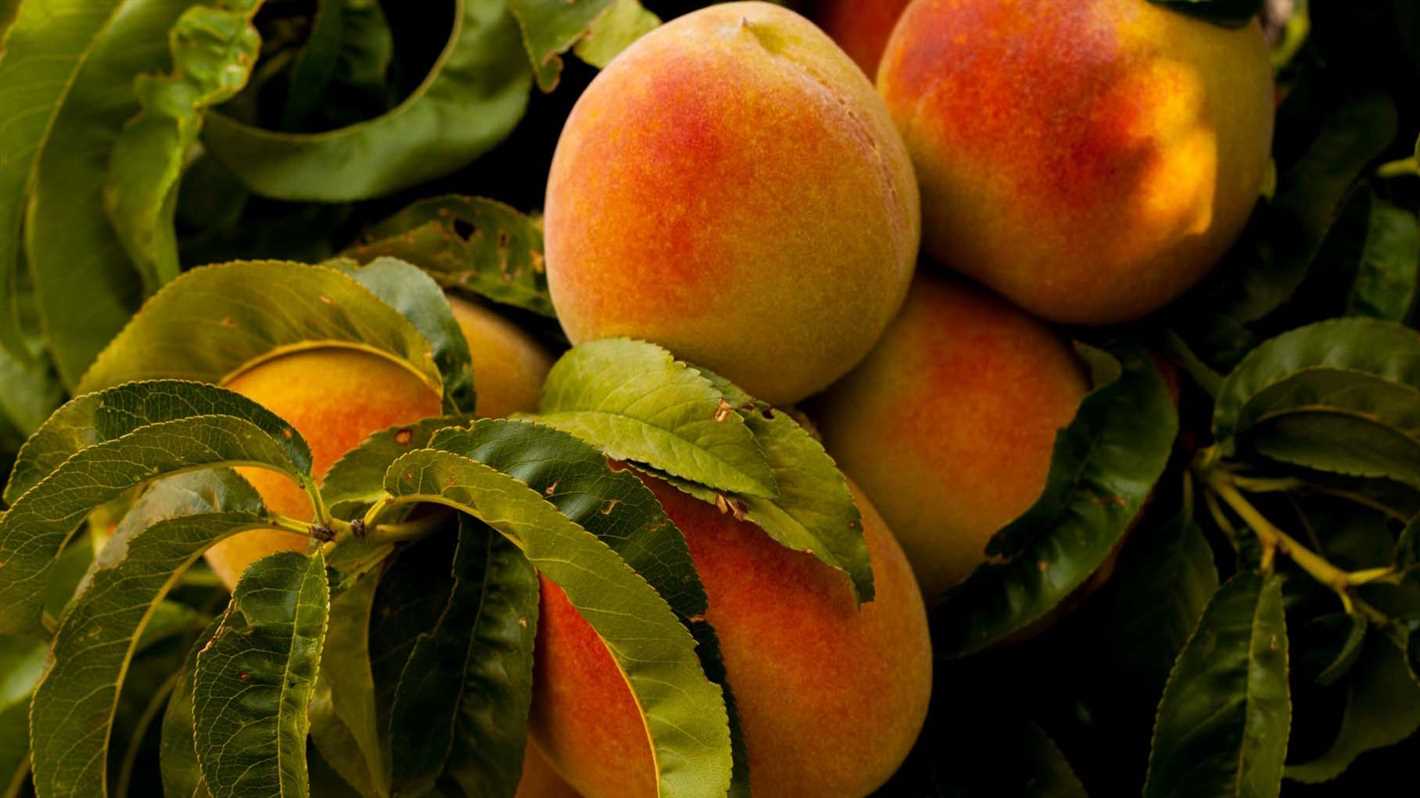

Proper pruning is essential for maintaining the health and productivity of your peach tree.
- Prune your peach tree during the dormant season to remove dead or diseased branches and to promote airflow and sunlight penetration.
- Remove any branches that are crossing or rubbing against each other.
- Thin out excess branches to improve air circulation and reduce the risk of disease.
4. Watering and Fertilizing
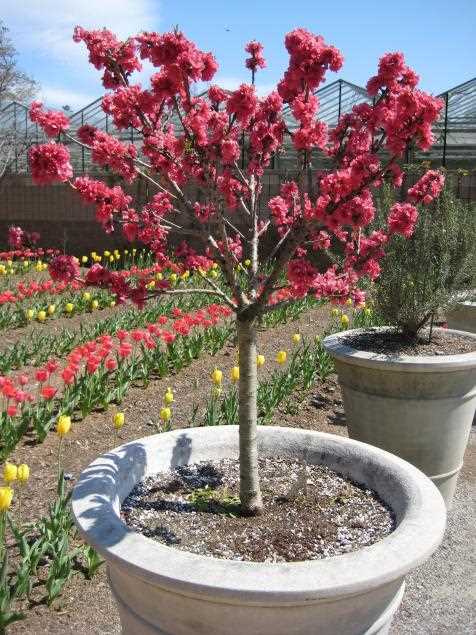

Peach trees require regular and consistent watering throughout the growing season. The soil should be kept evenly moist, but not waterlogged.
- Water deeply once or twice a week, ensuring that the water reaches the root zone.
- Apply a balanced fertilizer in early spring and again in early summer to provide the necessary nutrients for growth and fruit production.
- Use a slow-release fertilizer to avoid over-fertilization.
5. Pest and Disease Control
Peach trees are susceptible to various pests and diseases, which can affect the quality of the fruit.
- Regularly inspect your peach tree for signs of pests such as aphids, peach tree borers, and leafhoppers. If detected, take appropriate measures to control their population.
- Monitor your peach tree for signs of diseases like peach leaf curl, brown rot, and bacterial spot. Apply fungicides or other treatments as necessary.
6. Harvesting
Peaches should be harvested when they are fully ripe but still firm.
- Gently twist and pull the peach from the tree, taking care not to damage the fruit.
- Handle the peaches with care to prevent bruising.
- Store ripe peaches in a cool, dry place or refrigerate for a few days before enjoying.
Peach Species and Varieties
Peaches come in various species and varieties, each with its own unique characteristics and flavors. Here are some of the most common species of peaches:
1. Prunus persica
Prunus persica, also known as the common peach, is the most widely grown species of peach worldwide. It is native to China and has been cultivated for thousands of years. Common peach varieties include Elberta, Hale Haven, and Redhaven.
2. Prunus davidiana
Prunus davidiana, commonly known as the Korean wild peach, is a species native to Korea, China, and Japan. It is often used as a rootstock for grafting other peach varieties due to its hardiness and disease resistance.
3. Prunus kansuensis
Prunus kansuensis, also known as the Gansu peach, is a wild peach species found in China. It is known for its small, round fruits and is often used as rootstock for grafting other peach varieties.
4. Prunus ferganensis
Prunus ferganensis, commonly known as the Fergana peach, is a species native to the Fergana Valley, which spans parts of Uzbekistan, Kyrgyzstan, and Tajikistan. It is a hardy peach variety with excellent flavor and is often used as a parent in breeding new peach varieties.
Aside from these species, there are countless varieties of peaches, each with its own flavor profile, ripening time, and color. Some popular peach varieties include:
Georgia Belle: A classic yellow peach with a sweet flavor and firm flesh.
Red Baron: A red-skinned peach with a tangy flavor and juicy flesh.
White Lady: A white-fleshed peach with a delicate flavor and low acidity.
Suncrest: A large, juicy peach with a rich flavor and yellow flesh.
These are just a few examples of the many peach varieties available. Whether you prefer yellow, white, or red-fleshed peaches, there is a variety to suit every palate.
Exploring Different Types of Peaches
There are several different types of peaches, each with their own distinctive characteristics. Here are some of the most common varieties:
1. Freestone Peaches
Freestone peaches are known for their easily removable pits, making them a popular choice for eating fresh or using in recipes. The flesh of freestone peaches separates easily from the pit, making them easy to prepare. They are available in both white and yellow varieties.
2. Clingstone Peaches
Unlike freestone peaches, clingstone peaches have pits that cling to the flesh, making them more difficult to remove. Clingstone peaches are often used in canning and cooking, as their flesh holds up well during the cooking process. They are typically available in yellow varieties.
3. Semi-Freestone Peaches
Semi-freestone peaches are a cross between freestone and clingstone peaches. They have a flesh that partially clings to the pit, but it is still easier to remove than with clingstone varieties. Semi-freestone peaches are versatile and can be used for both fresh consumption and cooking. They are available in yellow varieties.
4. White Peaches
White peaches have a unique flavor profile that is less acidic and sweeter than yellow peaches. They are known for their delicate texture and are often used in desserts and salads. White peaches are available in both freestone and clingstone varieties.
5. Yellow Peaches
Yellow peaches are the most common and widely available type of peach. They have a balanced sweet-tart flavor and juicy flesh. Yellow peaches can be used in a variety of dishes, including pies, cobblers, and preserves. They are available in freestone, clingstone, and semi-freestone varieties.
When choosing peaches, it’s important to consider the ripeness and firmness of the fruit. Look for peaches that have a slight give when gently squeezed, indicating that they are ripe and ready to eat. Avoid peaches that are overly soft or have bruises or blemishes.
| Peach Variety | Type | Pit Removal | Flavor |
|---|---|---|---|
| Freestone | Flesh separates easily from pit | White or yellow | Juicy and sweet |
| Clingstone | Pit clings to flesh | Yellow | Firm and tart |
| Semi-Freestone | Partial clinging to pit | Yellow | Balanced sweet-tart |
| White | Can be freestone or clingstone | White | Less acidic and sweeter |
| Yellow | Can be freestone, clingstone, or semi-freestone | Yellow | Balanced sweet-tart |
No matter which variety you choose, peaches are a delicious and versatile fruit that can be enjoyed in a variety of ways. Whether you’re eating them fresh, using them in recipes, or preserving them for later use, peaches are sure to add a sweet and juicy touch to your meals and snacks.
Selecting and Planting Peach Trees
When selecting and planting peach trees in your garden, there are a few important factors to consider to ensure their successful growth and fruit production. Follow these steps to get started:
- Choose a suitable peach tree variety: There are many different peach tree varieties available, each with its own characteristics and requirements. Consider factors such as the climate and soil conditions in your area, as well as the desired taste and size of the fruit when choosing a variety.
- Ensure proper sunlight: Peach trees require full sun exposure for at least six to eight hours a day to thrive and produce abundant fruit. Select a location in your garden that receives adequate sunlight throughout the day.
- Prepare the soil: Peach trees prefer well-drained soil that is rich in organic matter. Before planting, prepare the soil by removing any weeds or grass and incorporating organic compost or aged manure to improve its fertility.
- Choose the planting method: There are two common methods for planting peach trees: bare root and container-grown. Bare root trees are usually planted in late winter or early spring, while container-grown trees can be planted at any time of the year. Choose the method that suits your needs and availability.
- Dig the planting hole: Dig a hole that is wide and deep enough to accommodate the root system of the peach tree. Make sure the hole is at least twice as wide as the tree’s root ball.
- Plant the tree: Gently place the peach tree into the planting hole, making sure that the bud union (the swollen area at the base of the trunk) is at or slightly above ground level. Backfill the hole with soil, firming it gently around the tree’s roots to remove any air pockets.
- Water and mulch: After planting, thoroughly water the tree to settle the soil and ensure good root-to-soil contact. Apply a layer of organic mulch, such as wood chips or straw, around the base of the tree to conserve moisture, suppress weeds, and regulate soil temperature.
- Prune and train: Pruning peach trees is essential to maintain their shape, remove diseased or damaged branches, and promote air circulation within the canopy. Train the tree to a central leader system or an open vase shape to optimize sunlight exposure and fruit production.
- Provide ongoing care: Regularly water and fertilize the peach tree as needed, following the specific recommendations for your chosen variety. Monitor the tree for signs of pests or diseases, and take prompt action to prevent or treat any issues that arise.
By following these steps, you can successfully select and plant peach trees in your garden, allowing you to enjoy the delicious fruits they produce for years to come.
Choosing the Right Peach Variety for Your Garden
Factors to Consider
When choosing a peach variety to grow in your garden, there are several factors to consider. These include:
- Climate: Different peach varieties have different climate requirements. Make sure to choose a variety that is suitable for your specific climate.
- Size: Consider the size of the peach tree and make sure it will fit well in your garden. Some varieties grow taller and wider than others.
- Chill hours: Peach trees require a certain number of chill hours in order to produce fruit. Make sure to choose a variety that matches the chill hour requirements of your region.
- Taste: Consider the flavor of the peaches produced by each variety. Some varieties are sweeter or more tart than others.
- Disease resistance: Some peach varieties are more resistant to common peach diseases than others. If disease resistance is important to you, choose a variety that has a good track record.
- Harvest time: Different peach varieties ripen at different times. Consider when you want to harvest your peaches and choose a variety accordingly.
Popular Peach Varieties for Home Gardens
There are many peach varieties available, but here are some popular ones for home gardens:
| Variety | Climate | Size | Taste | Disease Resistance | Harvest Time |
|---|---|---|---|---|---|
| Redhaven | Temperate | Medium | Sweet | Good | Mid-summer |
| Elberta | Temperate | Large | Sweet | Fair | Mid-summer |
| Contender | Temperate | Medium | Freestone | Good | Late summer |
| Glacier | Cool | Small | Freestone | Good | Early summer |
Conclusion
Choosing the right peach variety for your garden is essential for a successful harvest. Take into consideration your climate, size limitations, chill hour requirements, taste preference, disease resistance, and desired harvest time. With these factors in mind, you can select a peach variety that will thrive in your garden and provide you with delicious peaches season after season.
Caring for Your Peach Trees
- Watering: Peach trees require regular watering, especially during dry spells. Water deeply once or twice a week to ensure proper hydration. Apply the water directly to the base of the tree, avoiding wetting the foliage.
- Fertilizing: Fertilize your peach trees in the early spring before the new growth starts. Use a balanced fertilizer with a ratio of 10-10-10 or 14-14-14. Follow the package instructions for application rates and methods. Repeat the fertilization process in late spring and early summer if needed.
- Pruning: Pruning is essential for maintaining the shape, size, and overall health of your peach tree. Prune in late winter or early spring before the buds start to swell. Remove any dead, damaged, or diseased branches. Thin out the center of the tree to improve air circulation and sunlight penetration. Also, remove any branches that are crossing or rubbing against each other
- Thinning: Peach trees often produce an abundance of fruit, which can lead to small, low-quality peaches. Thinning the fruits when they are about an inch in diameter will help improve their size and quality. Leave one peach every 6-8 inches along the branches.
- Pest and Disease Control: Monitor your peach tree regularly for signs of pests and diseases. Common pests include aphids, peach tree borers, and plum curculios. Use organic or chemical insecticides as needed to control infestations. Diseases such as peach leaf curl, brown rot, and bacterial spot can also affect peach trees. Apply appropriate fungicides or follow cultural practices to minimize the risk of disease.
- Winter Protection: Peach trees are susceptible to cold temperatures and frost damage. Protect your trees from winter weather by wrapping the trunk with burlap or using tree wraps. Mulch around the base of the tree to insulate the roots. Consider planting peach tree varieties that are more cold-hardy if you live in a region with harsh winters.
Pruning, Fertilizing, and Disease Prevention
Pruning
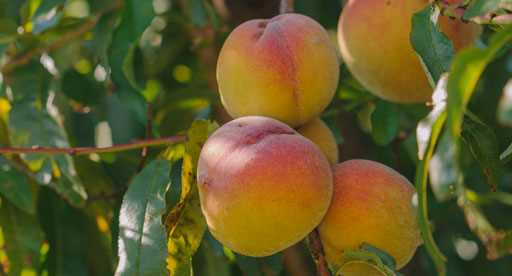

Pruning is an essential part of growing healthy peach trees. It helps to maintain the tree’s shape, control its size, and increase airflow and sunlight penetration, which promotes better fruit production. Here are some pruning tips for peach trees:
- Prune during the dormant season, preferably in late winter or early spring before new growth begins.
- Remove any dead, diseased, or damaged branches.
- Thin out crowded branches to allow better airflow and light penetration.
- Remove any branches that are rubbing against each other.
- Prune the tree to an open center shape, which allows for better sunlight exposure to the fruit.
Fertilizing
Proper fertilization is crucial for the healthy growth and fruit production of peach trees. Here are some tips for fertilizing peach trees:
- Apply a balanced fertilizer, such as a 10-10-10 or 14-14-14 formula, in early spring before new growth starts.
- Follow the recommended dosage on the fertilizer package for your tree’s size and age.
- Avoid overfertilizing, as it can lead to excessive vegetative growth and poor fruit quality.
- Apply fertilizer evenly around the drip line of the tree, avoiding direct contact with the trunk.
- Water the tree thoroughly after fertilizing to help the nutrients penetrate the soil.
Disease Prevention
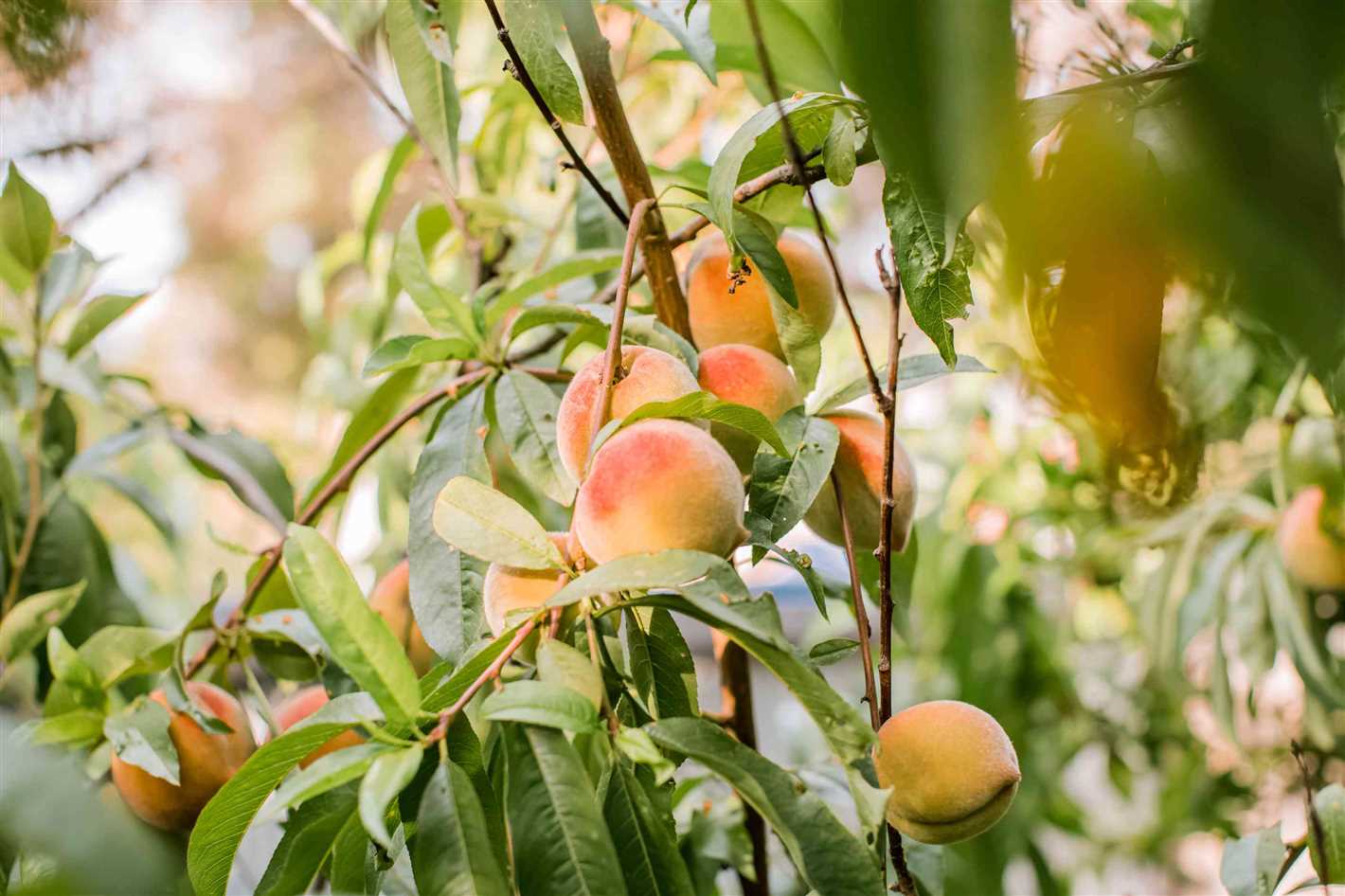

Preventing diseases is essential to ensure the health and productivity of peach trees. Here are some disease prevention measures:
- Choose disease-resistant peach tree varieties.
- Prune the tree regularly to improve airflow and reduce moisture on the leaves and fruit.
- Remove any fallen fruit or plant debris from around the tree, as they can harbor diseases.
- Apply fungicides according to the recommended schedule and dosage to prevent fungal infections.
- Monitor the tree for signs of disease, such as leaf spots, cankers, or fruit rot, and take appropriate action immediately.
By following proper pruning, fertilizing, and disease prevention practices, you can ensure the health and productivity of your peach trees and enjoy a bountiful harvest of delicious peaches.
Harvesting and Storing Peaches
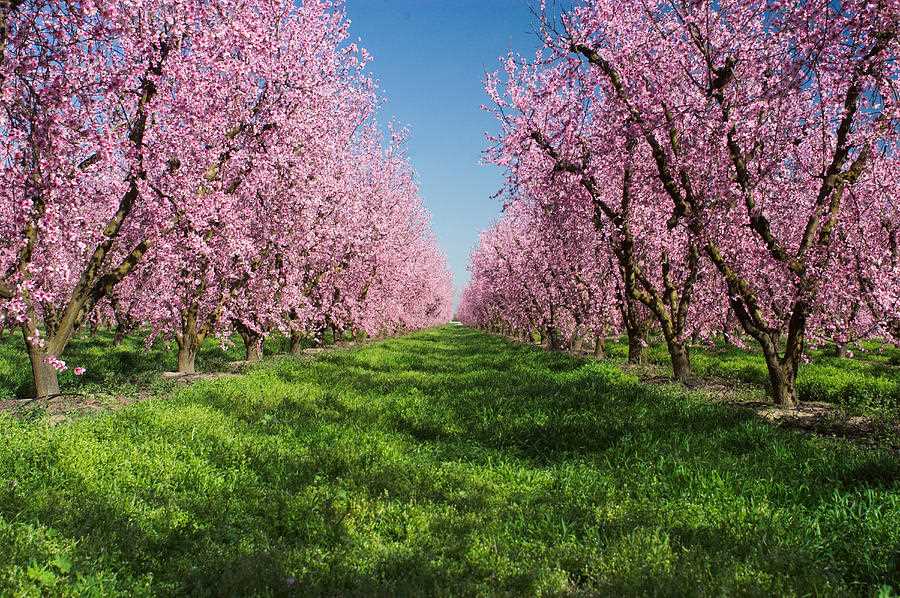

Harvesting Peaches
Peaches should be harvested when fully ripe for the best flavor and texture. Here are some tips for harvesting peaches:
- Check the color: Peaches should have a vibrant color, usually yellow or orange, depending on the variety. Avoid picking green or underripe peaches as they will not ripen well off the tree.
- Assess the firmness: Gently squeeze the peach to see if it gives slightly. It should not be too hard or too soft.
- Smell the peach: Ripe peaches have a fragrant, sweet aroma. If the peach smells ripe, it’s a good indication it’s ready to be picked.
- Look for a clean stem: A ripe peach should easily detach from the stem when gently twisted. If it requires force, it may not be fully ripe.
- Use a pruning shears or scissors to carefully cut the peach from the tree, leaving a small portion of the stem attached.
Storing Peaches
Proper storage is crucial to keeping your peaches fresh and delicious for as long as possible. Here are some tips for storing peaches:
- Sort your peaches: Separate your peaches into groups based on ripeness. Use the ripest ones first, as they won’t last as long.
- Store at room temperature: If your peaches are not fully ripe, store them at room temperature to allow them to ripen further. Place them in a single layer and avoid stacking them, as this can cause bruising.
- Refrigerate ripe peaches: Once your peaches are fully ripe, refrigerate them to extend their shelf life. Place them in a plastic bag or container to prevent them from drying out or absorbing odors from other foods.
- Handle with care: Peaches are delicate fruits, so handle them gently to avoid bruising or damaging their skin.
Tips for Enjoying Fresh Peaches
Now that you’ve harvested and stored your peaches, here are some ideas for enjoying them:
- Eat them fresh: The simplest way to enjoy peaches is to eat them as they are. Slice them and enjoy their juicy goodness.
- Add them to salads: Peaches can add a sweet and refreshing element to salads. Pair them with greens, goat cheese, and a balsamic vinaigrette for a delightful combination.
- Bake them into a pie or cobbler: Peaches are a classic ingredient for desserts. Try making a peach pie or cobbler to savor their summery flavor.
- Make peach jam or preserves: If you have an abundance of peaches, consider making homemade peach jam or preserves to enjoy their flavor throughout the year.
- Freeze them for later: If you can’t consume all your peaches, freeze them for later use. Simply peel, pit, and slice the peaches, then place them in a freezer-safe bag or container.
| Common Mistakes | Best Practices |
|---|---|
| Picking peaches too early | Wait until the peaches are fully ripe, as they will not ripen further once picked. |
| Storing peaches in airtight containers | Allow for some airflow by using plastic bags or containers with ventilation holes. |
| Not handling peaches gently | Handle peaches with care to avoid bruising or damaging them. |
When and How to Pick Ripe Peaches
Knowing when to pick your peaches is crucial to ensure they are at their peak flavor and juiciness. Here are some guidelines to help you determine when your peaches are ripe and ready to be picked:
Color
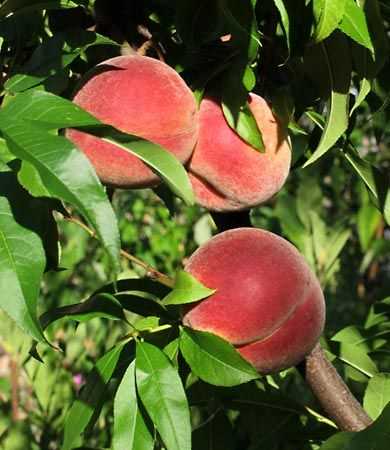

One of the most important indicators of ripeness is the color of the peach. The majority of peaches will change from green to yellow or orange as they ripen, although certain varieties may remain green even when fully ripe. Look for a vibrant, uniform color and avoid any green or pale patches.
Texture
Gently squeeze the peach to check its firmness. Ripe peaches should feel slightly soft but not mushy. Avoid peaches that are too hard or overly soft, as they may be underripe or overripe, respectively.
Fragrance
Take a whiff of the peach near the stem end. A ripe peach will have a sweet, floral aroma. If the peach smells overly sweet or fermented, it may be overripe.
Taste
If possible, taste a small sample of the fruit. Ripe peaches should be juicy, flavorful, and have a perfect balance of sweetness and acidity. If the peach tastes bland or sour, it is likely underripe.
Once you have determined that the peaches are ripe, it’s time to pick them. Follow these steps:
- Hold the peach gently in your hand, taking care not to squeeze or bruise it.
- Using a gentle twisting motion, twist the peach upward to detach it from the branch.
- If the peach doesn’t easily come off, it may not be fully ripe. Leave it on the tree for a few more days and check again later.
- Place the freshly picked peaches in a basket or a container, being careful not to stack them on top of each other to prevent bruising.
- Store the peaches at room temperature for a day or two to allow them to fully ripen. If you need to store them for longer, you can place them in the refrigerator to slow down the ripening process.
Now that you know when and how to pick ripe peaches, you can enjoy the delicious fruits of your labor in the garden!
Question-answer:
How to grow a peach tree in the garden?
To grow a peach tree in the garden, you first need to choose a suitable location with well-draining soil and good sunlight. Plant the tree in early spring, making sure to dig a hole large enough for its roots. Water the tree regularly, especially during dry periods, and fertilize it annually. Prune the tree in late winter to remove dead or damaged branches and shape it. Keep an eye out for pests and diseases, and take appropriate measures to protect your tree.
What are the different species of peaches?
There are two major species of peaches: Prunus persica, which includes the common garden peach, and Prunus davidiana, which includes the nectarine. The common garden peach is the most widely grown species and has a fuzzy skin. Nectarines, on the other hand, have a smooth skin and are usually sweeter and juicier than peaches.
What are some popular varieties of peaches?
There are many popular varieties of peaches, each with its own unique characteristics. Some popular varieties include Elberta, Redhaven, Hale Haven, and Georgia Belle. Elberta peaches are known for their large size and juicy flesh, while Redhaven peaches are prized for their early ripening and sweet taste. Hale Haven peaches have a rich flavor and are great for canning, while Georgia Belle peaches are known for their delicate texture and exceptional juiciness.
How long does it take a peach tree to bear fruit?
The time it takes for a peach tree to bear fruit can vary depending on the variety and growing conditions. In general, peach trees take about 2 to 4 years to bear fruit. However, some early-ripening varieties may start producing fruit in as little as one year after planting. It’s important to note that young peach trees need proper care and maintenance to ensure healthy growth and fruit production.
Can I grow peaches in a container?
Yes, you can grow peaches in a container, but it’s important to choose a dwarf or semi-dwarf variety that is suitable for container growing. Make sure the container is large enough to accommodate the root system and provides good drainage. Use a well-draining potting mix and place the container in a sunny spot. Container-grown peaches may require more frequent watering and fertilizing compared to those grown in the ground. Prune the tree regularly to keep it in shape and manageable size.







